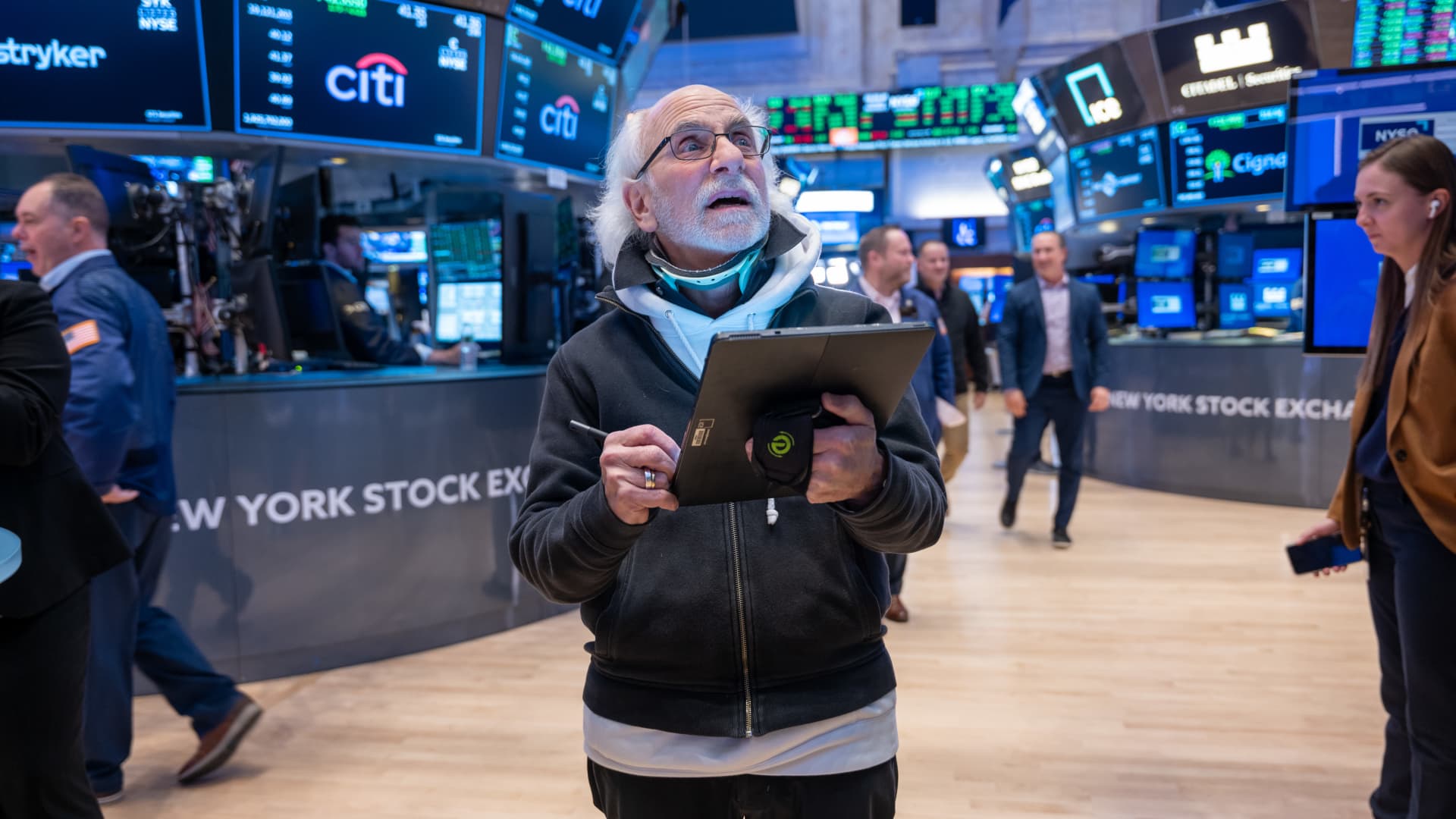Friday’s market reaction to the jobs report comes down to a simple premise: bad news is good news, as long as it isn’t too bad.
Stocks rallied sharply after the Labor Department said nonfarm payrolls rose by 150,000 in October — 20,000 fewer than expected but a difference attributable pretty much completely to the auto strikes, which appear to be over.
For the Federal Reserve, the relatively muted job creation coupled with wage gains nearly in line with expectations adds up to a scenario in which the central bank doesn’t really have to do anything. It can just continue to let the data flow in, without having to move on interest rates as it evaluates the impact of its previous 11 hikes.
“The Fed finally got what it’s been looking for — a meaningful slowdown in the labor market,” said Mike Loewengart, head of model portfolio construction for Morgan Stanley’s Global Investment Office.
“We’ve seen one or two head fakes in this direction before, but the fact that this report followed other weaker-than-expected economic data points this week may encourage investors who have been waiting for a less-hawkish Fed,” he added.
Markets reacted in more ways than one to the report. Traders in fed funds futures reduced the probability for a December rate hike to less than 10% and now see the first cut coming as soon as May, according to CME Group tracking.
However, that cut could be the really bad news, as it likely would signal the Fed’s concern that the economy is slowing so much that it needs a boost from monetary policy. Slow, controlled growth is something the markets and the Fed are seeking in the current climate, negative growth is not.
“Investors who are eager for the Fed to be cutting rates should be careful what they wish for,” Michael Arone, chief investment strategist at State Street Global Advisors, said in an interview earlier this week.
Despite market pricing, it seems like cuts aren’t around the corner if recent statements from Fed officials are any indication. Fed Chairman Jerome Powell said Wednesday that cuts have not been a part of the conversation among policymakers.
“It seems like that’s still a ways off in my mind,” Richmond Fed President Thomas Barkin said during an interview Friday on CNBC’s “Squawk on the Street.” “You could imagine scenarios where demand comes off and you have to do something. You could imagine a scenario where inflation is starting to settle and you want to lower real rates. Both of those imaginary things still feel pretty far out the distance.”
Don’t miss these stories from CNBC PRO:
- Bank of America’s investment strategist says the S&P 500 correction could last until it hits this level
- A ‘panic spike’ is possible late October into November, says Bank of America’s chart analyst
- The S&P 500 has entered a correction. Here’s why Warren Buffett likely thinks that’s good news
- Morgan Stanley auto analyst Jonas says investors are ‘waking up’ to idea that Ford, GM are not a way to play EV boom
